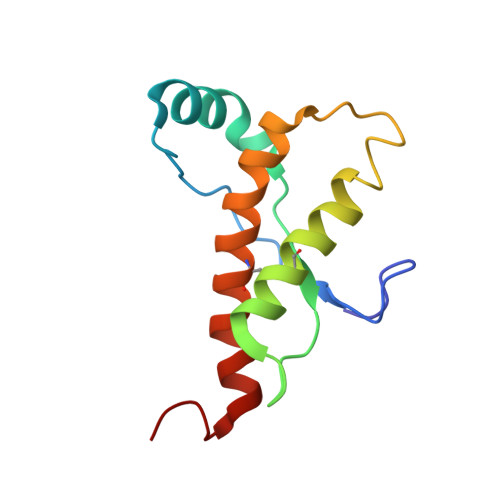Cellular prion protein conformation and function.
Damberger, F.F., Christen, B., Perez, D.R., Hornemann, S., Wuthrich, K.(2011) Proc Natl Acad Sci U S A 108: 17308-17313
- PubMed: 21987789
- DOI: https://doi.org/10.1073/pnas.1106325108
- Primary Citation of Related Structures:
2L1D, 2L39, 2L40 - PubMed Abstract:
In the otherwise highly conserved NMR structures of cellular prion proteins (PrP(C)) from different mammals, species variations in a surface epitope that includes a loop linking a β-strand, β2, with a helix, α2, are associated with NMR manifestations of a dynamic equilibrium between locally different conformations. Here, it is shown that this local dynamic conformational polymorphism in mouse PrP(C) is eliminated through exchange of Tyr169 by Ala or Gly, but is preserved after exchange of Tyr 169 with Phe. NMR structure determinations of designed variants of mouse PrP(121-231) at 20 °C and of wild-type mPrP(121-231) at 37 °C together with analysis of exchange effects on NMR signals then resulted in the identification of the two limiting structures involved in this local conformational exchange in wild-type mouse PrP(C), and showed that the two exchanging structures present characteristically different solvent-exposed epitopes near the β2-α2 loop. The structural data presented in this paper provided a platform for currently ongoing, rationally designed experiments with transgenic laboratory animals for renewed attempts to unravel the so far elusive physiological function of the cellular prion protein.
Organizational Affiliation:
Institute of Molecular Biology and Biophysics, Eidgenössische Technische Hochschule Zurich, Schafmattstrasse 20, CH-8093 Zurich, Switzerland.














